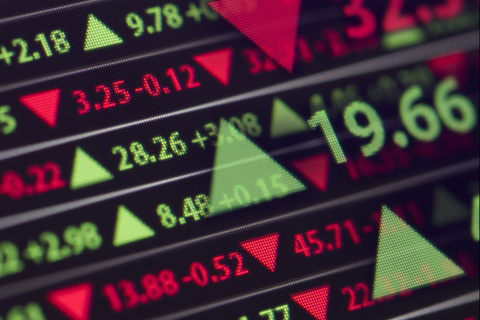 As of December 31, 2013, S&P 500 companies reported more than $4 trillion in cash and short-term investments on their balance sheets. We're waiting for some of this dry powder to be spent, or for a one-time tax holiday to encourage U.S. corporations to bring much of this cash back into the U.S. since so much of it is maintained outside the country.
As of December 31, 2013, S&P 500 companies reported more than $4 trillion in cash and short-term investments on their balance sheets. We're waiting for some of this dry powder to be spent, or for a one-time tax holiday to encourage U.S. corporations to bring much of this cash back into the U.S. since so much of it is maintained outside the country.
Companies are using some of this cash for such activities as dividends, stock buybacks and mergers and acquisitions. So when do buybacks make sense for shareholders? And what is driving the recent wave of merger and acquisition activity?
Stock Buybacks
As of Q1 2014, S&P 500 companies had bought back about $160 billion in stock. Some recent notable buyback announcements include Apple's $30 billion addition to its already planned $60 billion repurchase and the Wells Fargo plan to buy back 350 million shares, which is worth $17 billion based on the stock price at the announcement.
Motives for stock buybacks include:
- signaling that the stock is undervalued;
- flexibility of distributing cash without the expectation of cash dividends;
- tax efficiency when the tax rate on capital gains is less than that of cash dividends; and
- offset in share increases from executive stock options.
Naturally we want to know if borrowing cash to buy back stock is more beneficial to stock holders or whether it is better to use cash on hand. It depends. Borrowing is the best choice if the after-tax cost of debt is less than the earnings yield (inverse of the price-to-earnings ratio) on the stock. That condition raises earnings per share. If that is not the case, then using cash on hand is best. Given the secular (long-term) low in interest rates, you might have also guessed that borrowing to buy back stock is probably most beneficial. That is our sense too.
Mergers and Acquisitions
Along with an increase in share buybacks, another way companies use cash is by spending on merger and acquisition targets. Recently there has been a flurry of such activity. Notable examples have been between Novartis and GlaxoSmithKline, who swapped divisions, and Pfizer's interest in AstraZeneca, but that courtship recently ended. In current multi-billion dollar deals, GE is interested in Alstom, AT&T took DirectTV in an all-cash deal, and Tyson Foods just won the food fights with Pilgrim's Pride for Hillshire Brands.
To what we can attribute the wave of activity? Well, from where we sit, the logical explanation is that CEOs are looking for a better return than the low levels of interest generated by large amounts of cash on company balance sheets. Moreover, we believe that this is a sign that the "animal spirits" in the global economy are alive and well, and that risk-taking is one way to express it. This kind of activity needs to be viewed as a positive.
Conclusion
We still favor stocks over bonds and cash. On a shorter-term basis we would not be surprised if stocks had a weak middle-third this year, setting up for a rally into year-end 2014 and beyond. The emergence of stock buybacks, mergers and acquisitions is an attempt to invest cash on hand. These activities, coupled with America's energy revolution will bode well markets. As always, we advocate appropriate risk controls and asset allocation based on each client's individual needs.
If you have specific questions about what the best investment strategy is for your personal situation feel free to contact us.










